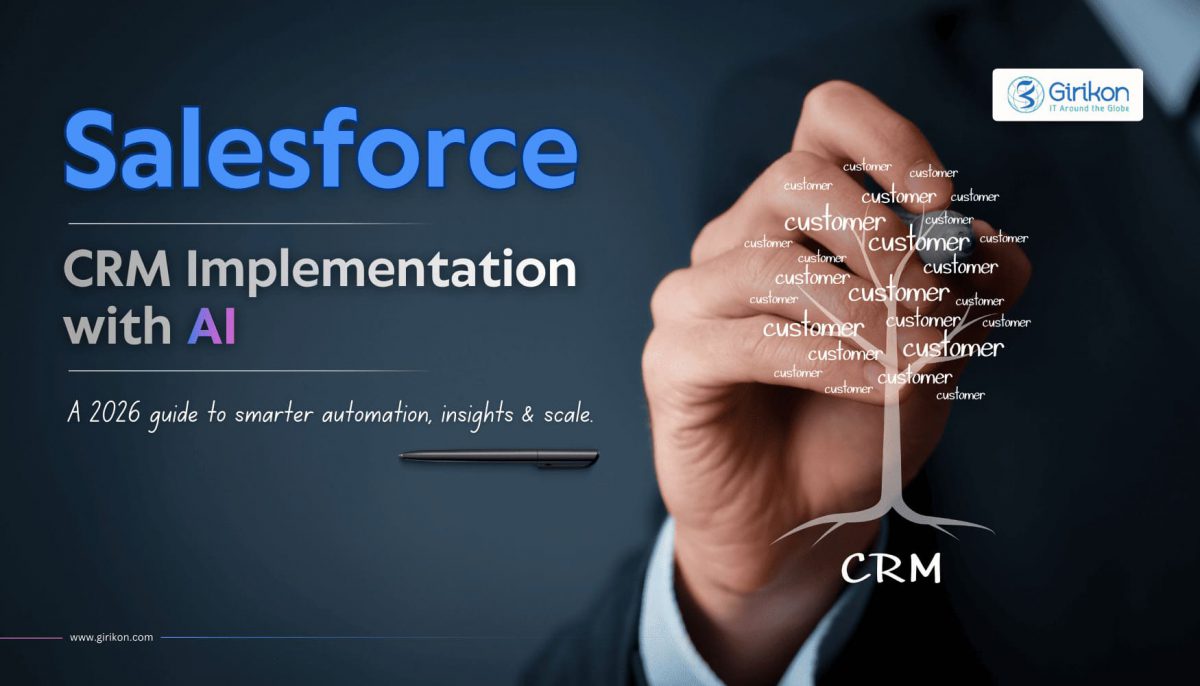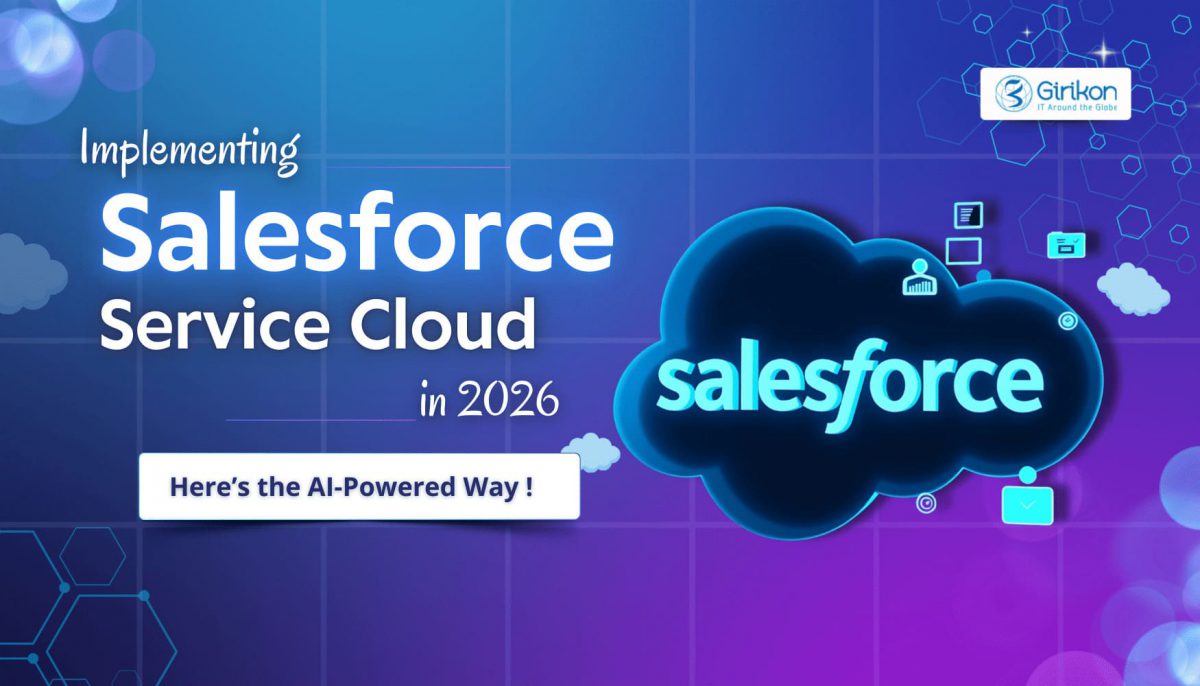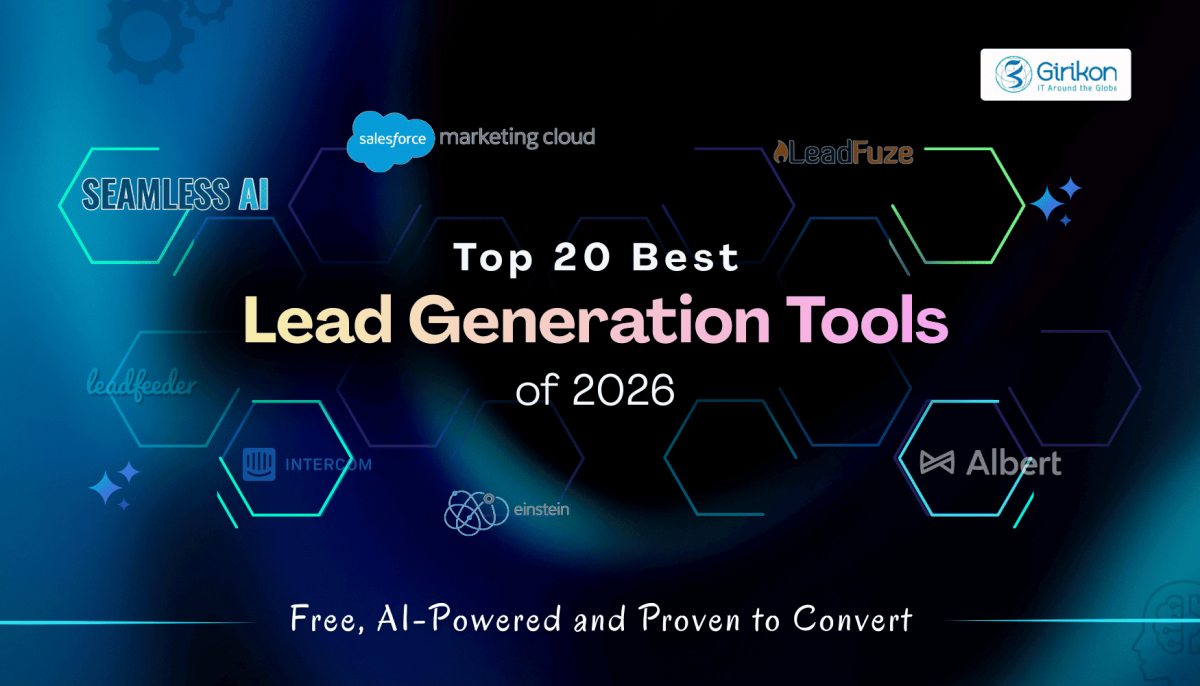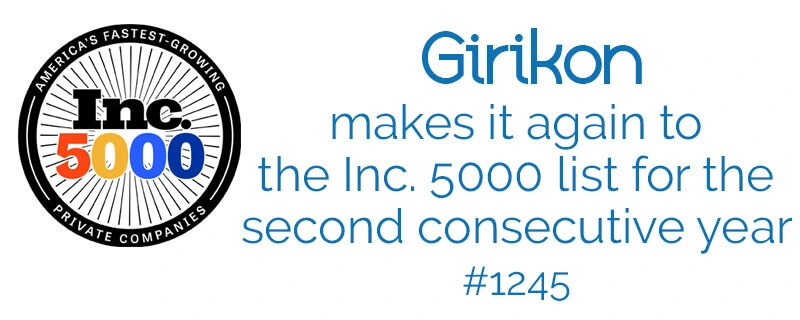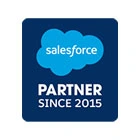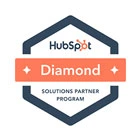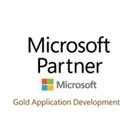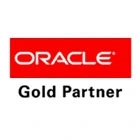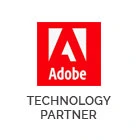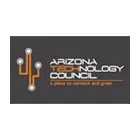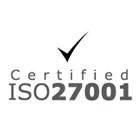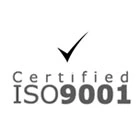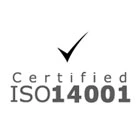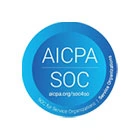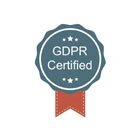Artificial Intelligence has become a major differentiator for most technology companies and Salesforce isn’t any different. Over the years, Salesforce has upgraded its platform with AI-driven competences such as Data cloud, Einstein and smart automation. These capabilities are significantly changing how Salesforce delivers value. In other words, adopting AI is no longer a choice, it’s a must have. This transition is spearheaded by one of the best Salesforce consultants who can help you harness the power of AI for competitive advantage.
However, not every consultant is armed to navigate this new AI-driven landscape. So how can you tell if your consultant is AI-ready or not.
Why Should You Partner with One of the Best Salesforce Consultants?
Partnering with one of the best consultants provides businesses with an edge over their competitors through personalized solutions, phased implementation and expert support. With deep knowledge of the Salesforce ecosystem, these consultants align it with your business goals to drive greater ROI. Besides helping avoid costly mistakes, they accelerate deployment, and confirm best practices in automation, data and user adoption. With proven experience across different industries, top consultants anticipate challenges and drive innovation leading to seamless digital transformation. They help you remain relevant with the latest AI-enabled features.
What are the Capabilities that Define an AI-ready Consultant?
Understanding of AI Ecosystem: AI-ready partners are building future-proof solutions by harnessing the capabilities of Salesforce's AI ecosystem. They have a thorough understanding of Agentforce. These partners are also proficient with advanced tools such as Copilot Studio and Prompt Builder for designing smart role-specific assistants; Data Cloud for unifying data and augmenting prediction accuracy; and Prediction Builder for developing predictive models that drive data-informed decisions across the organization.
Focus on Use Cases: Leading partners focus on developing AI-based use cases that deliver tangible business value rather than just adopting it for the sake of innovation. A future-oriented partner works with you to design use cases that are aligned with your revenue goals, objectives, and more. This could include recommending next-best actions for accelerating deal velocity, cut response times significantly, or using predictive scoring to identify churn risks and tie them directly to retention strategies.
Emphasis on Data Governance: Successful AI initiatives begin with high-end, dependable data and top consulting partners prioritize this from the start. They ensure your data is clean, comprehensive, and morally managed by taking a hands-on approach. This includes conducting regular data audits to identify issues such as inconsistencies or potential bias. They also suggest strategies for data enrichment and deduplication to improve data precision. Most significantly, they align AI models with proper standards, especially when managing sensitive data, ensuring compliance and responsible use of AI use across your Salesforce environment.
They Empower Teams with AI Literacy: Even the most robust AI model delivers insubstantial value without user adoption. That’s why leading consulting firms focus heavily on upskilling teams. They help users comprehend how AI fits into their day-to-day workflows through focused training sessions. They also develop guides and prompt templates to make it easier for teams to interact with AI tools within Salesforce. By establishing continuous feedback loops, these consultants ensure users feel supported when engaging with AI-generated recommendations.
Continuous AI Optimization: Providers of Salesforce consulting services understand that deploying AI is a continuous journey. They don’t vanish after implementation; rather, they stay engaged to ensure your AI solutions grow with your business. These partners reinstruct models to align with shifting data patterns and user behaviors. They go beyond technical accuracy by monitoring adoption rates and performance metrics, ensuring the AI tools deliver real value. As business goals and customer needs shift, they help you adapt your AI use cases.
Offer References: Consultant who are AI-literate must be able to support their claims with real-world success stories. Look for comprehensive case studies and client references that highlight how they’ve implemented AI within Salesforce to solve unique business challenges. These should include measurable outcomes. Success stories not only validate their expertise but also demonstrate their ability to modify AI solutions to different industries. This proves that they can deliver results-driven transformation.
What to Enquire Before Connecting with an AI Consulting Partner?
Rather than prioritizing technical qualifications and certifications, make sure to prefer partners with proven experience, proof of outcome, strategic alignment and more. With AI impacting every aspect of a business i.e. from data infrastructure to user experience, a partner who is ready to be by your side throughout the journey, should be considered. So, if you are looking for the right partner, make sure to ask them the following questions.
• Have you successfully scaled AI workflows within Salesforce environments?
• What metrics do you use to define success in your AI implementations?
• How do you ensure that my data is both prepared and used ethically?
Final Words:
Salesforce is leading the digital transformation curve in this AI-powered CRM landscape. However, to leverage the true value of this platform, businesses need the support of an AI-ready consultant who considers AI an enabler of business transformation rather than just a toolset. To get an edge in this AI-driven world, businesses must work with the right expert to draw tangible outcomes for their business. In the years to come, AI will be rooted in almost every implementation. However, not all partners are empowered to help organizations make the most of these capabilities. The right Salesforce Implementation Partner will guide you through responsible adoption of AI and support continual improvement.
Businesses across the globe are turning to AI agents to raise their customer engagement. This is an obvious sign of where the future is heading. AI-driven automation isn't any out-of-the way experiment; it’s a strategic investment. And at the forefront of this undertaking is Salesforce Agentforce. However, just like any new and transformative technology, adoption is followed by certain hindrances. From integration complexities to user adoption blockades, businesses must go through a steep learning curve before they can fully harness the potential of Agentforce. Businesses must avail Salesforce implementation services to implement this platform.
When Agentforce projects fail, the common debate among stakeholders is whether the problem lies with the technology or its implementation. In fact, the platform holds a lot of potential; the real obstacles usually appear in how it’s strategized, configured, and adopted. Let’s understand the most common reasons why Agentforce projects fall apart and how one of the best Salesforce consultants can fix them:
Unrealistic Expectations: One of the most common reasons why Agentforce projects fail are unrealistic expectations. When executives know about AI-enabled virtual assistants that are capable of managing tasks independently, transformations can happen overnight. However, without a clear guideline, contemplations can flow down the drain. This disarrayed alignment often leads to dissatisfaction with pressure on teams to over-deliver. To avoid this drawback, consultants must set the tone right, from the very beginning. By focusing on tangible value rather than instant perfection, consultants can maintain pace, as well as stakeholder trust.
Weak Alignment with Stakeholders: Since Agentforce affects multiple departments, goals and processes should align with each other. However, the project becomes a battle of priorities in case of misalignment. This inconsistency leads to contrary requirements, delays in decision-making, and other setbacks. An experienced consultant can serve as the link between teams, fostering smooth and efficient collaboration. Regular committee meetings further help maintain alignment, ensuring every team move in the same direction, even when adjustments are necessary.
Inadequate Data Quality: Poor data quality and integration are reasons why Agentforce projects fall short. Since the intelligence of this platform depends entirely on the data it processes, inadequate and outdated data across systems can result in mistaken suggestions. Weak integration planning can lead to inconsistent customer profiles, duplicate records, and broken automation flows. An experienced consultant can fix these issues by conducting a thorough valuation of data readiness before implementation, establishing clear governance rules and emptying processes, and mapping all crucial integration points. With clean and unified data, Agentforce can deliver faster, more precise decisions, unlocking the true value of the platform.
Excessive Customization: While Agentforce offers the flexibility to tailor processes, unnecessary customization without a clear governance model can build a complex system, which is hard-to-maintain. Common downsides include building too many custom-made automations instead of utilizing out-of-the-box features. This creates dependencies on a single admin, and obligatorily breaking functionality during updates. A trained consultant can avert these issues by implementing a customization governance policy that outlines when to customize versus configure while following Salesforce best practices. This structured approach keeps the system scalable while reducing the risk of future technical debt.
Overlooking Change Management: Even the most cutting-edge implementation can fall apart if it isn’t adopted by users. Resistance to change often shoots from ignorance about the platform’s capabilities, fear of jobs being replaced due to automation, insufficient training and more. In the absence of dynamic change management, the rate of adoption, as well as ROI declines significantly. By identifying the champions of change in every department, offering training modified to specific roles and providing quick guides for references and more, a consultant can drive adoption. Gathering feedback and acting on it post implementation, ensures improvement.
Poor testing: Insufficient testing and a hurried go-live are frequent reasons behind Agentforce project failures. Skipping the testing phase often results in bugs emerging in production, workflows failing under real-world conditions, and considerable user frustration at launch. The risk is higher with AI agents, where testing must authenticate not just technical constancy but also verdict accuracy. A trained consultant can address these risks by conducting unit integration, and user acceptance testing. This diligent approach reduces post-launch issues while boosting the confidence of users in the platform.
Overlooking Regulatory Requirements: Ignoring regulatory requirements can ruin an Agentforce implementation as these projects often involve managing sensitive customer data. Failing to be held responsible for regulatory guidelines during the design stage can lead to legal penalties or costly rework. By including compliance officers right from the beginning, utilizing tools such as encryption, audit trails, and more, a skilled Salesforce consultant can mitigate these risks. Security and compliance should be added right from the beginning, rather than just an afterthought.
Absence of Post-launch Support: Lack of ongoing support and maintenance after launch can hinder the continuing success of an Agentforce implementation. Many organizations consider going-live as end of the journey, but being a dynamic platform, it requires ongoing optimization. Without this, performance might deteriorate, and features may swiftly become outdated. A reliable consultant can help avoid this by supervising clients to track KPI’s; quarterly review automation rules; announce new capabilities as Salesforce releases them; and organize regular health checks to spot configuration drift or data issues.
A Tried and Tested Framework for Success
Certified and trained consultants can significantly improve Agentforce implementation outcomes by following a structured approach.
Discovery stage: In this stage, success metrics, scope and stakeholders are clearly defined.
Integration Preparation: This includes cleansing of data, integrations, and establishing governance.
Phased Implementation: This stage sequences rolling out of core features first before expanding.
User Enablement: This stage focuses on offering support, training and enablement to drive adoption.
Quality Assurance: This stage ensures thorough testing prior to launch.
Compliance: Security measures are included early in the process.
Continuous Optimization: Regular monitoring, improvement, and scaling is done to optimize the system up and keep it up and running.
Final Words:
Agentforce project usually fall apart not just due to technology alone. They often arise because of unrealistic expectations, neglected governance and more. By addressing these challenges, consultants can turn a fraught project into an impactful success story. To know more about Agentforce, make sure to avail Salesforce Consulting services.
Salesforce assists companies in efficiently managing their client relationships and giving clients the greatest possible experience. However, in order to enhance user experiences and boost engagement, enterprises also need to communicate effectively and quickly. For this reason, SMS for Salesforce has emerged as a top priority for companies looking to communicate with audiences quickly. Therefore, every industry uses Salesforce texting to provide customers and prospects with a seamless two-way communication platform, regardless of whether they are in the finance, real estate, education, or recruitment sectors.
One of the most dynamic sectors of the economy, the finance sector is always overburdened with work, ranging from prospecting to document gathering. This is where Salesforce messaging can help reduce manual labor and accelerate day-to-day financial operations.
SMS Messaging in Finance
Transactional Alerts
Every time money is taken out of the account, users feel anxious about it. Financial services customers can thus receive text updates about each transaction directly from Salesforce.
Finance reps can keep clients updated by sending text alerts on mutual funds, installment deductions, and the performance of financial assets.
Conduct Surveys
Financial businesses can use automated text messaging to conduct surveys. They can then segment their audience based on prior interactions and messages and gather data about their requirements, income, investment plan, etc., at scale.
In order to increase conversions, they can also leverage segmented lists to provide lending options, schemes, and investment opportunities.
Pitch New Offerings
Financial services businesses can now pitch new products or services using SMS messaging from Salesforce directly from their mobile device.
In the finance sector, SMS can assist in informing their prospective clients of any changes to interest rates, as well as the introduction of new online services or investment plans.
Deliver Prompt Support
The secret to attracting and keeping customers is providing high-quality service. Therefore, financial businesses can offer high-quality support services via text messaging using a full-featured Salesforce SMS messaging software like GirikSMS. SMS provides customers with the most convenient and recognizable two-way communication platform, despite the fact that there are other two-way communication methods.
As a result, communicating with a financial services business is convenient for them. Additionally, it becomes simple for agents to communicate with customers one-on-one and offer prompt assistance, which fast-tracks the process of answering their questions.
Send Updates
Customers may experience inconvenience if they are not informed of changes to policies, interest rates, operating hours, non-operational digital banking services because of maintenance or system upgrades, etc.
In such situations, financial institutions can utilize a business SMS messaging app in Salesforce or a bulk messaging app on AppExchange to update customers at scale and enhance their experiences when they interact with the organization.
Boost Sales and Customer Satisfaction with GirikSMS
Optimize your financial institution's customer communication strategy and its execution with text messaging. With GirikSMS's Salesforce native SMS and WhatsApp messaging, you have a competitive edge in drawing in new customers and cultivating existing ones.
Inboxes are overwhelmed with emails, so your email is most likely lost in the heap. For prospects and customers who read and reply to your GirikSMS text messages, text messaging is the most effective way to communicate, even though email is still required for recordkeeping. Use WhatsApp or SMS from GirikSMS to communicate with your customers across all geographies, in the language of their choice.
Lead Generation & Qualification
Gather lead data quickly, then send follow-up questions to better understand their needs and serve them.
Use inbound keyword inquiries to generate leads. The easiest technique to follow up with a lead is to send them a text message when they don't finish a conversation at the first interaction.
Use text-based, multilingual chatbots to qualify leads. Refer the opportunity to the right department and team member based on the prospect's responses and needs.
Automate Notifications and Reminders
Remain in the forefront of people's minds, encourage participation, reduce drop-outs and lack of responsiveness, and assist clients in succeeding and staying informed.
Send out alerts, updates, and reminders about forthcoming appointments, payments, renewals, new services, policy changes, and much more.
Automate messages according to campaigns, client segmentation, and deadlines.
Use Salesforce merge fields to personalize messaging at scale.
To ensure that the appropriate Salesforce user never misses communications or forgets tasks, configure rules-based internal notifications.
In a one-on-one GirikSMS conversation, escalate issues or cases so that a customer support agent may address the customer right away.
Leverage Salesforce Flows
Create the perfect communications workflows for your financial institution by utilizing Salesforce's automation features with Process Builder or Flow.
Switch between text messaging, email, phone calls, and any other channels of communication that are connected to your Salesforce organization seamlessly.
Personalize internal updates, reminders, and notifications.
Conduct Feedback Surveys to Drive Customer Satisfaction
Is your financial institution aware of whether you're fulfilling the expectations of your customers? Based on direct customer feedback, do you have a clear strategy for refining your products or services?
GirikSMS lets you use branching or linear questions for conducting polls and surveys.
You can use text messaging to get information that would otherwise be tedious, involve multiple steps, or time-consuming to gather through other channels of communication.
Salesforce makes it easy to report on the information you gather.
One-on-one Personalized Conversations With Customers
One-on-one personalized chats allow you to provide your customers with exactly what they want: tailored service.
Customer support representatives can respond promptly to tickets or issues. Salespeople and team members from other departments can communicate proactively.
Check in with a customer after their appointment or if you haven't heard from them in a while.
Congratulate a customer on their loan approval or property purchase. Follow up with a text feedback survey to understand what can be done to improve the issue, or thank them for their positive input.
GirikSMS Conversation View displays Salesforce users' history of text interactions with contacts, which you can filter on multiple parameters.
Enhance Process Transparency and Ensure Secure Transactions via SMS Messaging in Finance
Although sending text messages from Salesforce is not available by default, customers can still send messages using the best texting software available on AppExchange or a native bulk text messaging app for Salesforce. Financial institutions can leverage text messaging to elevate customer experiences and reimagine conventional methods of customer service. In addition to informing customers of updates, you can increase process transparency and ensure secure transactions by sending out text ale
In 2026, the difference between a smooth Salesforce implementation and a frustrating one often comes down to the tools your salesforce implementation partner uses. With AI reshaping development, and DevOps; using it is becoming a necessity. Salesforce is rolling out continuous enhancements across Einstein 1, Agentforce, and DevOps Center, choosing the right toolkit is no longer optional; it’s foundational to project success.
According to Gartner, over 30% of enterprise applications will include agentic AI capabilities by 2028, which means the tools used today directly influence how scalable, secure, and future-ready your Salesforce environment will be.
This 2026 guide walks you through the must-have Salesforce tools implementation partners rely on to build faster, deploy safer, automate smarter, and deliver outcomes with minimal technical debt.
Why Tools Matter More Than Ever in 2026
The Salesforce ecosystem has evolved dramatically. AI-assisted development, automated testing, governed DevOps pipelines, and cross-cloud automation have become baseline expectations—especially for enterprises scaling Salesforce across sales, service, marketing, data, and automation teams.
Using the right tools helps implementation partners:
Reduce deployment failures
Automate manual and repetitive tasks
Improve code quality from day one
Accelerate time-to-market
Deliver scalable Salesforce orgs aligned with best practices
Top 15 Salesforce Tools Recommended by Salesforce Consulting Firms for Effective Implementation
Below is the updated, research-backed list of tools every Salesforce implementation partner should be using in 2026.
1. Salesforce Code Builder (2026 AI-Enhanced Edition)
Salesforce Code Builder continues to evolve, offering a fully cloud-based development environment with deep AI integration. Developers can now build Apex, LWC, and Visualforce entirely in the browser with real-time AI assistance.
2026 Enhancements:
Agentforce-powered debugging
Auto-refactoring based on Salesforce best practices
Improved LWC scaffolding
Smarter inline AI suggestions
2. Salesforce Code Analyzer
Still one of the most essential tools for clean, scalable, and secure Apex code. Code Analyzer helps avoid performance issues and future technical debt by validating code quality during development.
Why it matters in 2026:
Updated rule sets for AI-generated code
Better detection of unused or risky Apex logic
Built-in vulnerability identification
3. Salesforce Data Loader (Enhanced Performance)
Data Loader remains the go-to solution for high-volume data operations. In 2026, Salesforce has improved speed, authentication, and API reliability.
Supports millions of records
OAuth-based secure authentication
Faster Bulk API v2 throughput
4. Salesforce DevOps Center (2026 Standard)
Salesforce DevOps Center has become a must-have tool for modern deployments. It replaces manual change sets and brings governed, track-able pipelines to every implementation.
Why partners must use it:
End-to-end change tracking
Native version control integration
Automated quality checks
Visual pipeline management
Salesforce reports that teams using DevOps Center reduce deployment errors by over 40% compared to change-set-only teams.
5. Agentforce for Developers (Major 2026 Upgrade)
Agentforce has become the most transformative tool for developers. It acts as an AI assistant that helps write, test, document, and fix Apex and LWC code faster.
New 2026 capabilities:
Generate Apex tests using real data patterns
Simplify integration design with suggested patterns
Create MuleSoft flow templates
Explain logs and errors in plain language
6. MuleSoft RPA (Growing Automation Standard)
Legacy systems without APIs still slow down many Salesforce projects. MuleSoft RPA helps fill these gaps with automation that connects old systems to Salesforce.
Automates manual processes
Bridges Salesforce with non-API systems
Improves data sync across the organization
7. Jenkins (Enterprise CI/CD)
Jenkins remains a favorite for enterprises that need heavy customization and full control over their CI/CD pipelines.
Highly customizable pipelines
Rich plugin ecosystem
Strong Salesforce DX support
8. CircleCI
CircleCI is known for its speed and developer-friendly CI/CD interface. It’s particularly helpful for teams needing rapid feedback loops.
Parallel test execution
Deep Salesforce DX integration
Real-time build insights
9. Salesforce Inspector
A lightweight but powerful Chrome extension, widely loved by developers and admins.
2026 improvements:
Faster metadata access
Improved SOQL suggestions
Better scratch-org support
10. Salesforce Report Builder
Even with Tableau and CRM Analytics rising in popularity, Report Builder remains essential for quick insights and operational dashboards.
Real-time reporting
Simplified drag-and-drop interface
Support for dynamic dashboards and filters
11. Salesforce Developer Console
A classic, lightweight environment for debugging, inspecting logs, and running queries.
Real-time performance metrics
SOQL/SOSL query tools
Convenient debugging workflow
12. Travis CI
A reliable CI tool especially popular with GitHub-centric teams.
Simple configuration
Automated testing pipelines
Lightweight builds
13. Copado (Enterprise DevOps Automation)
Copado is one of the most widely adopted Salesforce-native DevOps platforms.
Automated deployment governance
User story–based release tracking
Compliance and audit automation
Powerful regression testing tools
14. Provar Testing (Salesforce Testing Standard)
As Salesforce architectures grow more complex, automated testing has become non-negotiable. Provar is one of the leading tools for Salesforce UI + API test automation.
No-code test builder
Supports LWC, Flows, and Screen Flows
Reduces regression testing time by up to 70%
15. Gearset (DevOps + Backup)
Gearset has quickly become a favorite for both mid-size and enterprise teams because of its ease of use and strong backup capabilities.
Metadata and data deployment tools
Automated backups with rollback
Real-time org comparisons
Built-in CI pipelines
Conclusion
2026 is a breakthrough year for Salesforce development and implementation. With AI, automation, and DevOps becoming core pillars, the tools your implementation partner uses will define the speed, reliability, and scalability of your Salesforce ecosystem.
If you’re exploring which Salesforce tools best fit your roadmap, or evaluating whether your salesforce consulting firm uses the right stack—our experts at Girikon are here to help.
Looking for guidance on selecting the right Salesforce tools in 2026? Talk to our salesforce consulting experts today.
As the leading Salesforce texting app, GirikSMS helps users to engage efficiently with prospects, customers, and partners, enabling marketing and sales teams to text contacts in batches and empowering admins to automate triggered responses.
Salesforce SMS integration with GirikSMS is 100% native and involves point-and-click integration of managing incoming and outbound SMS capabilities within Salesforce. GirikSMS works natively in Classic and Lightning. You can set up GirikSMS for Salesforce in your Production or Sandbox via the Salesforce AppExchange, or simply search for GirikSMS in the AppExchange and follow the step-by-step instructions.
Salesforce SMS software introduces you to the new age of advanced messaging. You can just enjoy the ease of an intuitive Salesforce SMS messaging platform with click-and-drag functionality. GirikSMS is Salesforce's top-ranked native SMS app. GirikSMS, the best messaging software on Salesforce, is suitable for a wide range of verticals, including healthcare, travel, real estate, and education. It can be a game-changer when it comes to texting multiple contacts at the same time. GirikSMS can be your ideal partner when you need a one-stop bulk Salesforce SMS solution, offering you all of the necessary capabilities you need to drive customer engagement.
Significance of AI Messaging in 2026
Customers today want instant, personalized, and always available communication. Traditional tools, such as email and phone systems, simply cannot keep up with the demand.
Enter AI messaging.
Platforms designed with AI-powered communication automation provide businesses with a new arsenal of superpowers:
AI-powered customer support closes tickets faster than ever.
AI workflow automation eliminates manual follow-ups.
AI-powered customer interaction drives personalized engagement at scale
AI messaging for outreach at a scale of thousands of concurrent conversations.
AI messaging apps deliver sentiment analysis and predictive insights for a better user experience
These are not merely incremental improvements; they are game changers in the way companies operate.
Whether you want to remind customers about upcoming appointments via SMS or manage multi-channel outreach at scale, the appropriate tools can help you revolutionize your business.
Choosing a Salesforce SMS app with the best set of features?
That is the million-dollar question. What, then, really should you look out for?
The best SMS app for Salesforce isn’t just one that sends messages. It should:
Work natively with Salesforce
Scale across departments.
Provide advanced automation and personalization capabilities..
Provide enhanced compliance.
And in 2026, they will undoubtedly involve AI.
This is where GirikSMS stands out, as an app that not only texts but also optimizes and streamlines all your communication, including AI, automation, and ease of use, all from directly within Salesforce.
GirikSMS: The market-leading AI messaging app for Salesforce
Messages that work across languages.
The concept of worldwide messaging appears appealing until you encounter a language barrier. When your sales, marketing, and support reps interact with a multilingual audience, text translation can be challenging. Sometimes it can be inconsistent, lose context, and even inaccurate.
GirikSMS's AI-based language translation simplifies the process. You enter the message once, and the platform automatically converts it to the language of your choice and delivers it to the recipient based on their language selection. Whether you're nurturing leads in German, French, or Chinese, make sure you're communicating clearly and consistently, while being culturally correct.
Self-adapting Drip campaigns
Want to launch an SMS drip campaign? Traditionally, that entails hours spent determining what communication to send, what is the best time to send it, and what should be the follow-up strategy.
GirikSMS transforms the game.
With AI-powered drip suggestions, the platform offers the best cadence based on customer behavior, campaign performance, and past interaction history. It even suggests changes in message copy and predicts the best time to send the message, doing away with guesswork.
With this newfound approach, your drip SMS campaigns will help you get better outcomes. This is next-level automation in AI-powered Salesforce messaging.
No more struggling to compose the right SMS.
Writing a high-performance SMS copy is not as easy as it sounds. It's a state of high expectations; your message must be concise, succinct, compliant, and engaging in a couple of seconds.
GirikSMS now features AI-assisted content tools.
You can quickly refine, reword, or shorten any communication. In addition, a template quality score allows you to predict how well your message will do before sending it. If a message comes across as spam, too long, or unclear, you'll notice and fix it right away.
This transforms the Salesforce SMS app into more than simply a message delivery tool; it also serves as a creative genius at hand.
Voice-to-Text That Accelerates Engagement
Assume you're a field sales representative managing multiple customers. Composing messages all the time is simply not doable. You are usually on the move and need to respond to customer queries promptly.
Voice-to-text message creation comes as a game-changer.
All you need to do is speak to GirikSMS. It will automatically translate your voice into a precisely formatted SMS that is ready to go out. It's quick, device-friendly, and excellent for teams that need to remain productive even when they're not hunched over a keyboard.
This Salesforce texting software genuinely stands out for its convenience.
Faster and smarter conversations
Responding fast is necessary, but responding smartly is preferable. When a prospect or customer inquires about a product or service, your team should not have to scurry for an appropriate response.
GirikSMS provides contextual suggestions in real time using AI-generated responses. Whether it's a sales query, a service ticket, or a generic query, agents receive intelligent cues that allow them to react quickly without coming across as robotic.
What is the result? Faster and more relevant responses translate to interactions that move the engagement forward.
This is what distinguishes GirikSMS as a complete Salesforce SMS app rather than a simple SMS messaging software.
GirikSMS: Your ideal partner for omnichannel messaging
Best for conversational messaging.
GirikSMS leverages AI-powered assistants and conversational AI technologies for sales and marketing teams.
Strengths:
Conversational AI for web chat
Conversational AI technologies for qualifying leads as they come in.
Seamless, native integration with Salesforce.
Has in-built natural language processing (NLP) capabilities to respond faster to customers..
GirikSMS has also integrated AI models into its bot platform, paving the way for more personalized and contextualized interactions. It's a popular choice for marketing and sales reps looking to engage their audience faster than ever.
Ideal for customer support at scale.
GirikSMS is well-known for its robust support functionality and AI chatbot technologies and is preferred by Salesforce customers across sectors.
Strengths:
AI chatbot for partner onboarding and customer support.
AI-powered business apps for product support.
AI productivity tools to speed up ticket resolution.
Integrated AI technologies that understand and respond to customer sentiment.
GirikSMS is one of the best AI chatbot tools available in the market for businesses looking to streamline their support across multiple channels. It provides each rep with insights that shorten case resolution time and increase satisfaction.
Affordable
GirikSMS is a powerful yet budget-friendly AI messaging platform that supports both small and large businesses to implement messaging automation across multiple channels in minutes.
Benefits:
AI chatbot for budget-conscious businesses
Easy setup.
Live chat and automation within Salesforce.
AI-powered responses provide basic support for content development.
While it has enterprise-grade functionality, GirikSMS is great for companies looking to harness AI without making a significant investment. It features simple automation for answering frequently asked questions, handling customer inquiries, and much more.
There are many SMS apps available, but few are tailored to the demands of today's automation-seeking Salesforce users. If you're searching for a Salesforce messaging software that can give your teams a competitive advantage in terms of agility, intelligence, scalability, and reliability, GirikSMS is worth considering.
Whether you're executing multiple campaigns, providing customer support, or nurturing leads, GirikSMS helps you to adapt to your needs quickly.
Want to empower Salesforce with AI messaging?
Discover what conversational AI messaging looks like with GirikSMS.
Connect with an expert today to learn more about our AI messaging platform for impactful engagement.
Envision a turbocharged sports car which is sleek, effortless in motion and engineered for endless possibility. But, instead of hitting the road, it sits idle with no destination, no plan, and no fuel. That’s what it is like to invest in Salesforce without a well-thought-out strategy brought in by Salesforce implementation partner.
Being the most powerful CRM platform, Salesforce’s real value isn’t just in the features it offers, it’s how you put those features to work for your business goals. That’s where strategy comes in. No matter if you are startup looking to scale fast or an enterprise streamlining global operations, the different between Salesforce becoming your underused tool and the most valuable asset—boils down to how intentionally you implement it.
So, explore the blog throughout and learn why Salesforce strategy is absolutely essential to your success.
Benefits of Having Salesforce Implementation Strategies
When implemented effectively, Salesforce becomes your secret weapon for productivity, growth, and customer delight. It offers an exceptional range of benefits and some of them are provided below:
Streamlined Customer Support Process
Salesforce supports agents in many ways that ultimately result in unified customer interactions. For instance, it enables agents to access relevant data such as resolution process and case history from the unified customer interaction, thus leading to faster response time. Moreover, the AI service planner will give a step-by-step case resolution, thus keeping your team streamlined on customer support.
Collaborate and Communicate Better
While different applications are used by businesses for various tasks, Salesforce implementation enables them to conduct various activities and access updated customer information in real-time from the same platform only. Moreover, it provides such real-time and social collaboration tool that allows users to communicate, collaborate, and share information about projects on the go.
Targeted Marketing and Lead Management
Salesforce implementation allows the marketing team to segment the audience based on attributes to develop highly targeted and personalized campaigns. It also lets marketers focus on interests to weigh high-potential leads. It even provides sales forecasting tools to analyze historical data and customer behavior, leading to improved opportunity management.
Top Strategies for Successful Salesforce Implementation
These are the key measures you should steward for the Salesforce implementation specific to your business needs.
Drive Organizational Alignment with Involved Stakeholders
One key to ensuring success in the Salesforce implementation is keeping alignment between all stakeholders involved across organizations on different parts. So, ensure that you build trust between those who will be directly influenced by the implementation by letting them understand the reason for implementation and how it is going to influence the team members.
Configure Human Centric Experience
While implementing CRM with the help of Salesforce implementation partners, it is essential to craft a human-centric solution by considering the end users is essential. It lets you build such a solution that is intuitive, adaptable, and aligned with real user needs. Therefore, you must ask your end users about the common pain points to eliminate them entirely in providing customer satisfaction. This will not only drive higher adoption but lead to long-term success and productivity.
Leverage the Full Potential of Your Data
Today, a large number of organizations make critical choices using outdated and unrealistic information. If you belong to the same, it’s time to change your approach by relying only on the clean data. But how will you do it? By accumulating all customer data from distinct systems into Salesforce. This will let you create a complete picture of each customer by eliminating duplicate records and maintaining the data accuracy.
Types of Salesforce Implementation Strategies to Adopt
Knowing what Salesforce deployment approach you must adopt, lets you make the best choice. So, let’s explore different strategies below:
Big Bang Approach
The Big Bang strategy, also known as large-scale implementation, includes a complete execution of the process and existing system into a single process. Most startups, small businesses, and medium-sized organizations use the strategy to move all users to the Salesforce. Because it is faster and cheaper than other approaches. Also, it provides a higher ROI as all resources are focused on change management at the same time.
Managed Approach
In this approach, the Salesforce managed service providers take complete responsibility of the project—no matter if it is about planning, data migration, configuration, use training, and going live. Leveraging the approach, you can easily get in-depth implementation from Salesforce implementation partner. Moreover, it helps you eliminate all risks and complexities, fostering faster processes.
Self-Managed Approach
Within the self-managed approach, organizations have the sole responsibility to manage the implementation with their technical expertise and resources. As this type of implementation comes under the businesses with full control and results, this can prove to be more cost-effective, but with more delays and implementation issues.
Phased Approach
Just like the name suggests, it enables businesses to implement the existing Salesforce platform in different stages, which is helpful for larger enterprises that want to gradually shift to a new platform. However, its long procedure makes it more expensive and time consuming in nature. Also, teams require to gain more knowledge with each stage to enhance configuration and implementation.
Hybrid Approach
Hybrid approach is the combination of self-managed and managed strategies. That means businesses are allowed to manage some aspects on their own, while Salesforce consultants are responsible for only the specific parts of implementation. This allows businesses to make the most of technical expertise while considering team knowledge over specific phases of the projects.
In a Nutshell!
From aligning Salesforce implementation partners to creating human centric experiences and choosing the right deployment strategy, your approach should always reflect your unique business challenges, goals, and user needs. That’s why you must consider taking a phased route or striking a balance with a hybrid approach.
So, how?
With the help of Salesforce implementation experts that will have you put your users at the center of every decision, thus setting the foundation for stronger customer relationships, lasting success, and future-proof CRM.
table tr td{ padding: 10px;}
SMS open rates are at a staggering 98%. Email, on the other hand, stands at 20%. Your marketing, sales, and support teams cannot rely on legacy communication channels anymore. If you are now looking into SMS for Salesforce, you have come to the perfect place. This post cuts through the clutter and demonstrates how GirikSMS's native Salesforce app provides faster responses, tighter compliance, and AI-driven ROI, all without intermediary technologies or hidden costs.
Native App vs. External Connector – The Simple Version
What is a "native" application?
A software bundle that you install directly from AppExchange and runs entirely within Salesforce, with no additional logins required.
What is a Third-party connector?
A third-party package is one that resides outside of Salesforce and communicates with your organization via an API.
Why It Matters
Native App (GirikSMS)
Third-party Connector
Setup
Installation takes approximately 15 minutes.
Setup takes time -involves API keys, web-hooks, and point-to-point mapping.
Data Storage
All messages saved in Salesforce
Messages stored on third-party servers
Automation
Works seamlessly with Flow, Process Builder, and Apex
Need additional steps to invoke external endpoints
Compliance
GDPR/TCPA logs secure in Salesforce
Data is outside Salesforce, subject to legal audits
Ongoing Maintenance
Managed automatically by Salesforce updates
Manually handle tokens & version upgrades
In comparison, a native app is a plug-and-play solution that is faster and easier to deploy, automate, and manage compliance. Third-party connectors add moving parts, which take time and manpower to maintain. That is why businesses choose GirikSMS's native Salesforce messaging app.
GirikSMS Highlights for Salesforce SMS
Feature
Business Impact
Bulk & 1:1 SMS + WhatsApp from any record
98 % open, 5× more replies
AI Chatbot
Auto-qualify leads, handle FAQs, reduce human handling time by up to 40%
WhatsApp – SMS alternative
Don't miss a single notification
Flow, Apex & Triggers
Zero-code reminders and alerts
Real-time dashboards
View delivery, click-through, and campaign ROI within Salesforce
2025 Compliance (GDPR, HIPAA, TCPA, SOC 2)
Full transparency and audit trail
Transparent pricing, free SMS credits
No hidden carrier or other charges
Compliance (2025 Rules)
Standard
How GirikSMS Covers It
GDPR / Opt-in
Automated consent and “STOP” handling
HIPAA
PHI encryption and audit trail
TCPA
Quiet-hours handling and opt-out suppression
SOC 2
Data stored in Salesforce for external audits
Powerful Capabilities of GirikSMS
One-to-one conversations
Start texting with SMS or WhatsApp from any Salesforce record, including contacts, leads, opportunities, and custom objects.
Multiple chat views
Respond to contacts using the Chat manager. Manage all of your conversations in one place, pin custom labels, utilize templates, send multimedia files, schedule messages, enable auto replies, and do much more.
Bulk messages
Do you want to quickly send or schedule SMS and WhatsApp messages to a large number of people? Not a problem; using GirikSMS, you can do it via List Views, Reports, or Campaigns. Send personalized messages or utilize templates and bots.
Advanced Automation
Trigger built-in automation tools to send texts over SMS or WhatsApp.
Confirm appointments instantly, send reminders, special promotions, and more.
Send scheduled text messages based on time zones.
AI Chatbots
Automatically interact with prospects and customers.
Escalate to human agents for complex issues or based on rules.
Automate appointments, customer service tasks, lead nurturing and qualification, feedback surveys, and much more.
Benefits of GirikSMS
Built on Salesforce.
GirikSMS is a multi-channel AI messaging solution created and built specifically for Salesforce.
User-friendly software with excellent support
Our customers find GirikSMS to be extremely user-friendly. However, if you ever have a problem, our customer support staff is always available to help.
Quick and easy setup.
Software implementation does not have to be a lengthy and tedious procedure. GirikSMS gets you up and running in minutes. Furthermore, our customer onboarding team will fine-tune GirikSMS for your specific use cases and train your people on the app.
Affordable.
GirikSMS has simple and reasonable pricing. There are no hidden charges. There are no charges for unsuccessful messages. Pay solely for the messages delivered and the platform subscription.
Best-in-class compliance with GirikSMS
GirikSMS is the premier Salesforce-native SMS app for compliance, trusted by enterprises across the globe. Here’s why it is the ideal choice:
AI-powered Compliance Monitoring
GirikSMS's AI technology analyzes texts for SHAFT content, ensures opt-in compliance, and flags violations in real time. In short, it gives you peace of mind that manual checking cannot achieve.
Seamless 10DLC Registration
GirikSMS automates 10DLC registration. This means your numbers are approved by carriers within 24 hours. Unlike some platforms that require a week for approvals, GirikSMS ensures that there is minimal disruption in your campaigns.
Privacy-First Design
GirikSMS provides a non-server approach, with messages going directly to the network provider and being saved solely in Salesforce, ensuring compliance. Meanwhile, other rivals store data outside, prompting privacy worries among companies with stringent norms.
Transparent Pricing
GirikSMS starts at $3 per user per month, with no additional charges for compliance or automation. However, many other systems charge extra for crucial functionality like automation or message routing, making compliance expensive.
24/7 Support
GirikSMS provides free 24/7 assistance with quick response times (less than 4 minutes). Similarly, unlike other competitors who have reported delays or sluggish customer service, GirikSMS ensures you are never in the dark.
AI-Powered SMS and WhatsApp Drip Campaigns with GirikSMS
With inboxes full and attention spans that are diminishing by the day, forward-looking businesses are moving away from heavy email campaigns. The true connection occurs when people spend time on their phones. The future of communication is mobile-first over WhatsApp and SMS.
But vanilla messaging will not suffice. Today's users want quick, tailored, and intelligent communication. That's why businesses are increasingly turning to AI-powered, Salesforce-native message flows that go well beyond basic automation.
Why AI is the future of SMS drip campaigns
Traditional drip campaigns, particularly those based on email, frequently deal with low engagement and delayed responses. SMS open rates are a stunning 98% compared to 20% in the case of email.
However, Salesforce users often have to deal with:
Complex interfaces to navigate messaging tools and CRM.
Developer-intensive setups with low visibility (e.g., high costs for undelivered messages)
No backup plan in case WhatsApp fails.
No automation or AI logic incorporated into communication flows.
GirikSMS offers advanced functionality for:
Personalized drip campaigns.
AI-powered message flows
Multi-channel fallback (WhatsApp and SMS)
Leverage Salesforce flows and automation
You can:
Send out a text every time a form is submitted on your website or app.
Wait for 2-3 days for a response.
If there is none, send a WhatsApp follow-up.
If they click, alert your sales team and record it in the contact record.
All of this occurs within Salesforce. No switching tabs and no developer reliance.
AI-Powered Engagement: The GirikSMS AI Agent
GirikSMS's AI agent is its standout feature:
Learns response patterns over time.
Triggers outbound messages at the most opportune times.
Personalizes message tone and copy based on audience segmentation.
Dynamically adjusts the flow in response to user involvement.
This implies that your campaign gets smarter by the day, without the need for manual involvement.
GirikSMS's AI Messaging offers an unrivaled competitive edge.
Feature
GirikSMS Advantage
Native Salesforce Integration
No latency, 100% native, supports both custom and standard objects.
Unified Messaging Interface
Centralizes SMS, WhatsApp, and MMS.
Flow, Apex, Process Builder
Full automation with minimal or zero code
WhatsApp/SMS Fallback
Ensures delivery if any channel fails.
AI Chatbot & Smart Agent
Contextual responses
Analytics Dashboard
Delivery, open, clickthrough tracking
Global Compliance
GDPR, HIPAA, TCPA, SOC2-ready
Transparent Pricing
From $3/user/month, no fees on undelivered messages
Ready to get started?
Messaging from Salesforce should not be static. It needs to be intelligent, scalable, and secure. GirikSMS turns your outreach from a simple activity into a potent conversion engine.
Whether you work in healthcare, real estate, education, financial services, or nonprofits, you can now connect with your customers in a more meaningful way, regardless of where they are in the world.
AI messaging from Salesforce is the future of personalized engagement, especially when combined with GirikSMS' powerful capabilities.
Begin developing conversations, not campaigns. Request a demo today!

 +1-480-241-8198
+1-480-241-8198 +44-7428758945
+44-7428758945 +61-1300-332-888
+61-1300-332-888 +91 9811400594
+91 9811400594